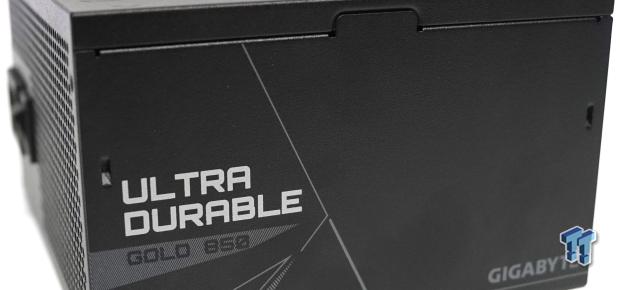
The Bottom Line
Pros
- + Aggressive price point
- + Compact design
- + Japanese company Nippon Chemi-Con makes the main capacitor
Cons
- - 5-year warranty
Should you buy it?
AvoidConsiderShortlistBuyIntroduction, Specifications, and Pricing
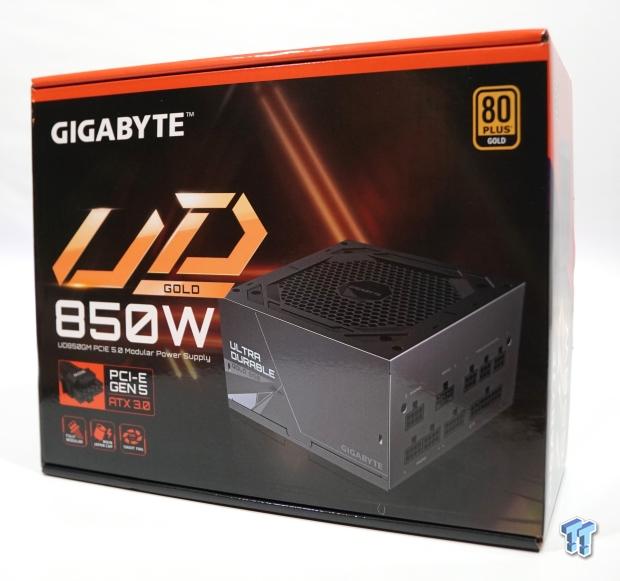
So today, we have a PSU from GIGABYTE. GIGABYTE, in the past for PSUs, has not been in the good graces of builders, mainly for fear of their PSUs from blowing up. Today we have the second version, V2, of the UD850GM PG5 80 Plus Gold rated ATX 3.0 PSU for review.
The MSRP pricing for the UD850GM is set at $139.99 and it comes with a five-year warranty, down from the 10 years we see on many these days. However, it can be found for $114.99 regularly. This price point is aggressive for an ATX 3.0 PSU, so hopefully, this one doesn't go up in smoke. Other specifications of the UD850GM are typical for an 850-watt ATX 3.0 PSU that is 80 Plus Gold rated, with a single 12VHPWR connector with 600 watts available to the GPU.

GIGABYTE GP-UD850GM PG5 850w Rev 2 ATX 3.0 Gold PSU
Packaging
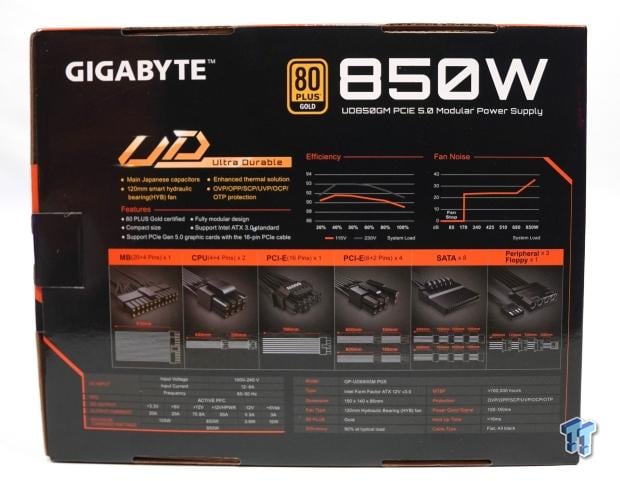
GIGABYTE has packaged the UD850GM in a reasonably standard cardboard box with a fair bit of product information and specifications.
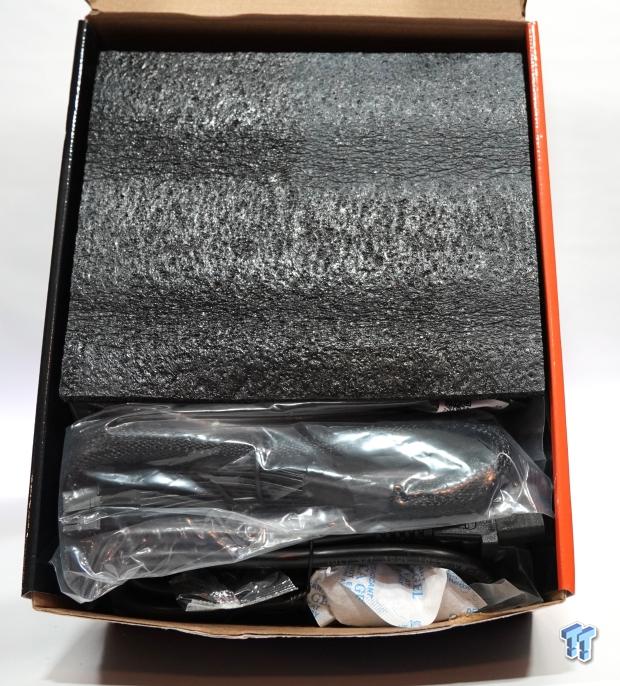
The inside packaging on the UD850GM shows black soft foam with the cabling in a clear plastic bag.
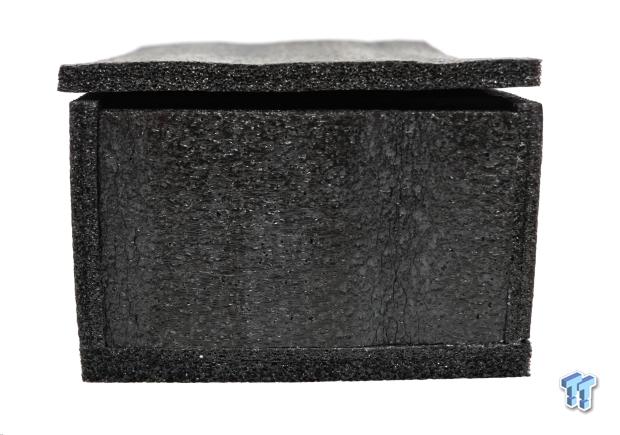
The UD850GM again is packed with a black soft form that encases the entire PSU while in shipment. However, the thickness of the foam is a little concerning; if the retail packaging was dropped, the PSU could be damaged.
Outside the GIGABYTE UD 850w V2 ATX 3.0 Gold PSU
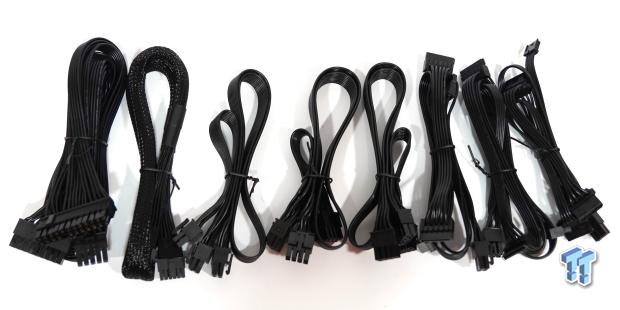
The cabling removed from its packaging is all flat black ribbon style, with only the 600w 12VHPWR connector being sleeved.
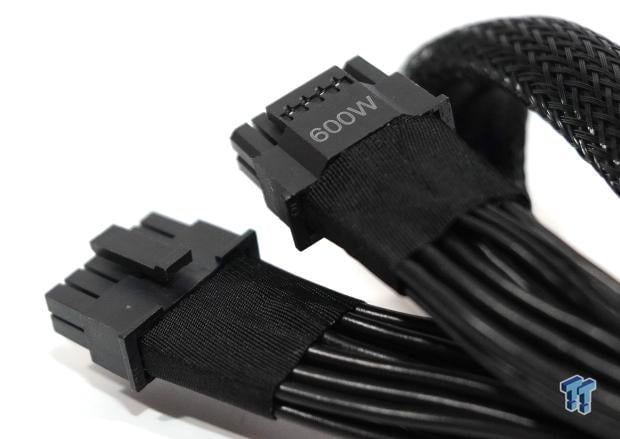
The 12VHPWR connector feels good in the hand and is rated for 600 watts the 12VPWR can handle.
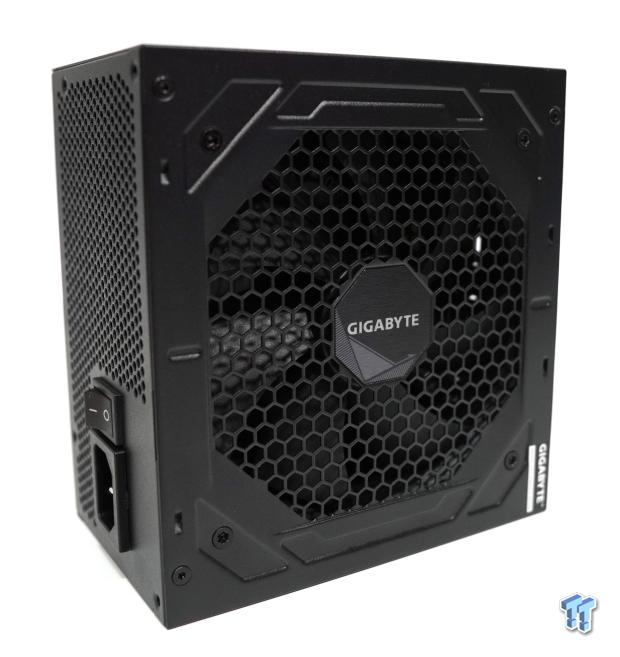
Taking the UD850GM out of the black foam packaging, the UD850GM has a very standard look for a PSU with a honeycomb mesh grille for the 120mm fan, along with gray highlights on a black base.
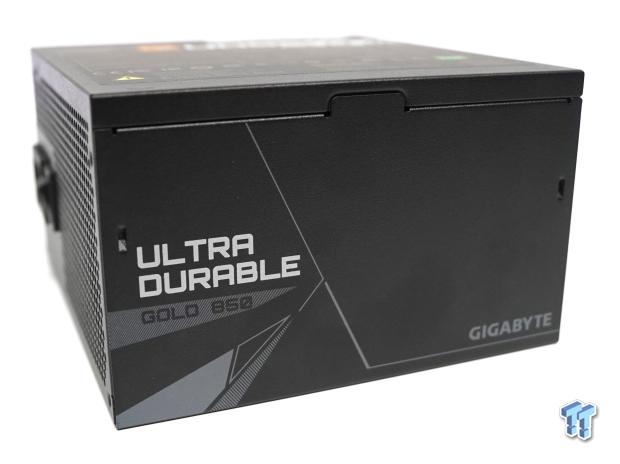
The side of the UD850GM shows more gray designs, the Ultra Durable branding, and that it's a Gold 850. GIGABYTE is also in the lower right corner.
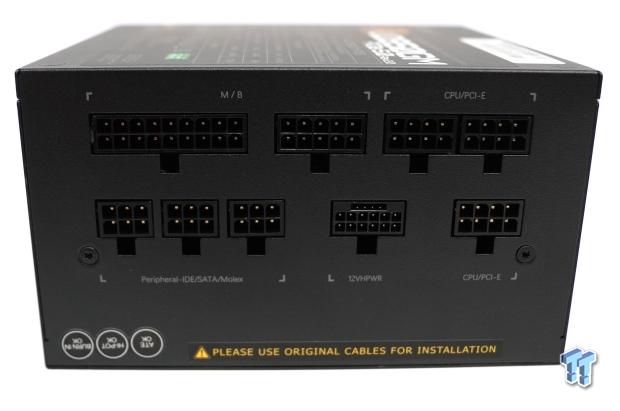
The cable input side of the UD850GM consists of a split 24-pin motherboard input with a 20 by 12 configuration. Next to the motherboard inputs are two CPU or PCIe 8-pin cable inputs, while an additional CPU/PCIe 8-pin is directly below. In the very center of UD850GM is the full 600-watt 12VHPWR connection. The last three connections are for three 6-pin peripheral, SATA, or MOLEX cabling.
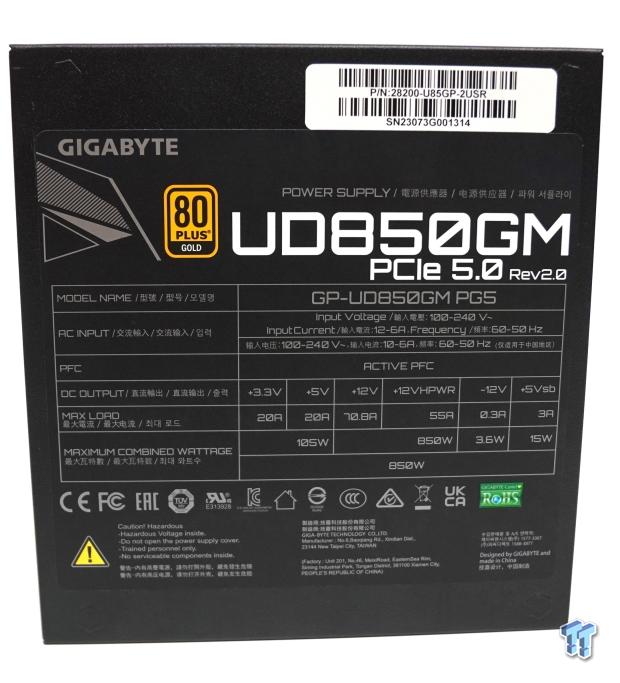
The bottom of the UD850GM has the traditional electrical label with almost 71 amps on the +12V rail. The 12VHPWR connection is on a separate rail with 55 amps to it.
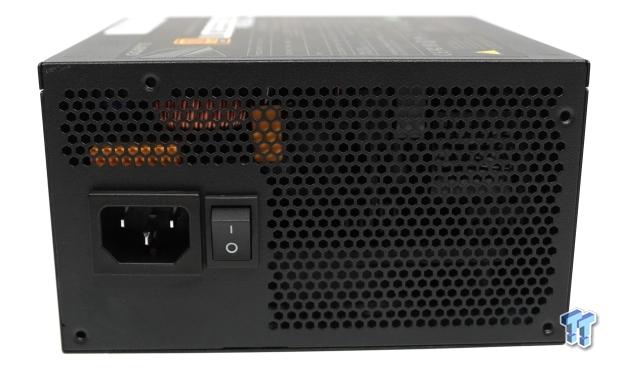
The backside, again, is remarkably understated with honeycomb mesh ventilation, an I/O rocker switch, and power input.
Inside the GIGABYTE UD 850w V2 ATX 3.0 Gold PSU
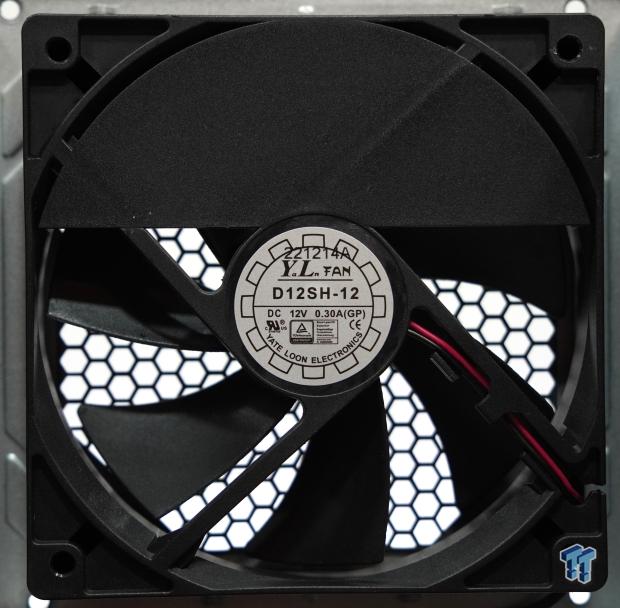
Once inside the UD850GM, the fan, which for the astute is none other than a Yate Loon fan, model number D12SH-12, Yate Loon fans were extremely popular with water-cooling enthusiasts for their high CFM to noise ratio. This particular Yate Loon fan is rated for 2,200 RPM at 40dB with 88 CFM.

The internals of the UD850GM is pretty minimalistic, with a few black heatsinks, a single larger capacitor, and secondary and primary transformers. Overall a clean approach.
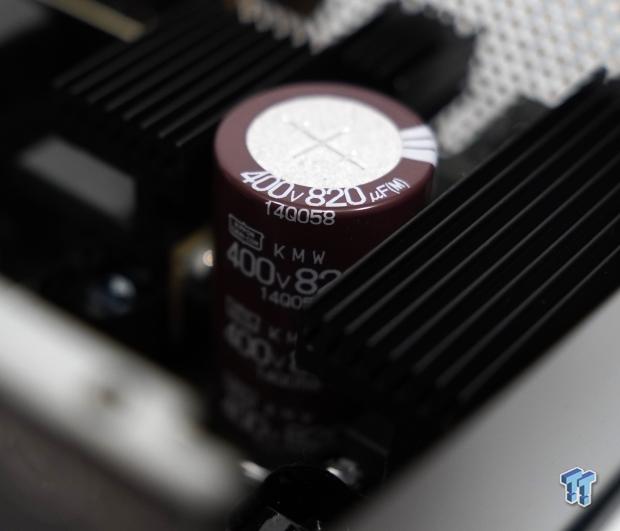
The Japanese capacitor used here is from KMW, aka Nippon Chemi-Con. It is rated for 400v with 820 microfarads.
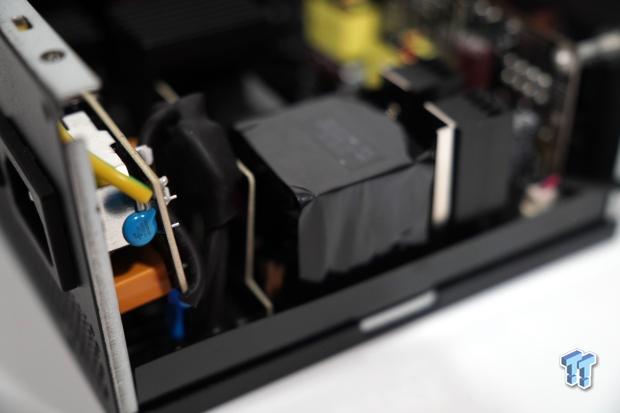
The primary transformer seems small but should be sufficient.
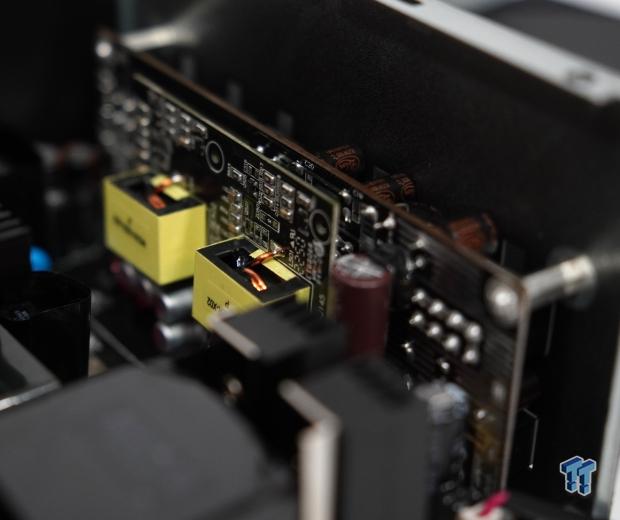
The two yellow secondary transformers are mounted to a daughterboard, and the soldering is perfect.
Ryan's Test System
- Motherboard: B650 AORUS Elite AX (AMD B650) - Buy from Amazon
- CPU: AMD Ryzen 9 7950X - Buy from Amazon
- Cooler: Arctic Freezer II 360mm AIO - Buy from Amazon
- Memory: Patriot Viper Venom RGB DDR5-5600 32GB - Buy from Amazon
- Graphics Card: NVIDIA RTX 3090 Founders Edition - Buy from Amazon
- Storage: Corsair MP600 PRO XT Gen4 PCIe x4 NVMe M.2 SSD - Buy from Amazon
- Case: Phanteks NV7 - Buy from Amazon
- Software: AIDA64 Engineer 6.32.5600, and CPU-z 1.94.0 x64
- Power Supply: XPG Cybercore II 1300w ATX 3.0 PSU - Buy from Amazon
- OS: Microsoft Windows 11 Pro 64-bit Build 22621 - Buy from Amazon
- Software: AIDA64 Engineer 6.8.6300, and CPU-z 2.03.0 x64
Testing & Final Thoughts
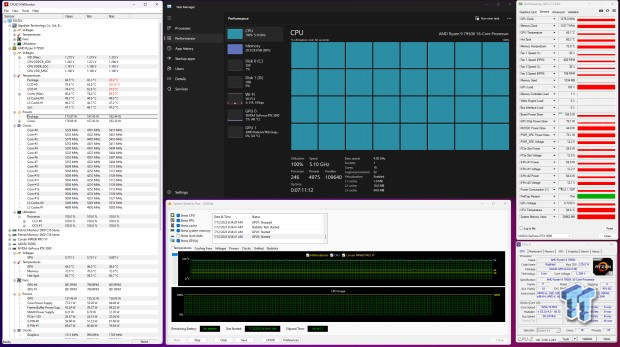
When testing the UD850GM, it became apparent that an 850-watt PSU, with today's power consumption needs, seems inadequately equipped to handle a high-end CPU and GPU when used together. Now I realize that most people wouldn't stress test both the CPU and GPU simultaneously, but having that extra headroom makes me think better about the entire system's stability. That extra wattage, not so much the 80 Plus certification rating once you get past 80 Plus Gold, makes the peace of mind worthwhile. And also, let's be honest here: your computer's PSU is usually the last thing you think about when upgrading your PC to the latest platform or fastest GPU.
Moving on to PSU testing, I usually shoot for a 50% PSU load, which ensures the best possible efficiency. I then set my sights on loading up my test system to around 425 watts, about 50% of the 850 watts the UD850GM PG5 V2 is capable of. Coming close with around 435 watts, I am okay with going above 10 watts over the 50% threshold. The AMD Ryzen 9 7950X hovered just above 180 watts while running full tilt, while the iGPU onboard pulled an additional 60 to 80 watts above and beyond the 180 watts.
The other big power user, the NVIDIA RTX 3090, had to be cut down to a 45% power draw via GeForce Performance settings, making it shy of 160 watts. Using a KillaWatt P3 Electricity monitor, the wattage drawn from the wall netted about 470 watts, making the UD850GM PG5 Rev 2 about 92.6% efficient, easily surpassing the 80 Plus Gold certification.
In closing, is the UD850GM PG5 Rev 2 a good PSU? Yes, it is, for the most part. GIGABYTE looked at what happened to their previous PSUs and tried to make them safer, more stable, and ultimately better. My only gripe is that the Yate Loon fan that GIGABYTE has decided to use, while does provide good airflow, is quite loud compared to the rest of the system.
Back to current pricing, the UD850GM PG5 V2 has an MSRP of $139.99; however, it currently is sitting at $114.99, which for an ATX 3.0 PSU with a full 600-watt 12VHPWR connection, is still pretty good. That said, there are more than a few solid competing PSUs in the 1,000-watt PSU arena to compare against the UD850GM PG5 V2 for about the same amount of money.
Would I recommend the UD850GM PG5 V2 to anyone? No, not to the high-end enthusiast builder, but probably someone looking to build a computer with an AMD Ryzen 5 or Intel Core i5 CPU while running a mid-range GPU from either team green or team red. Under those components, the system should hover around 50% load and be optimal for efficiency.

